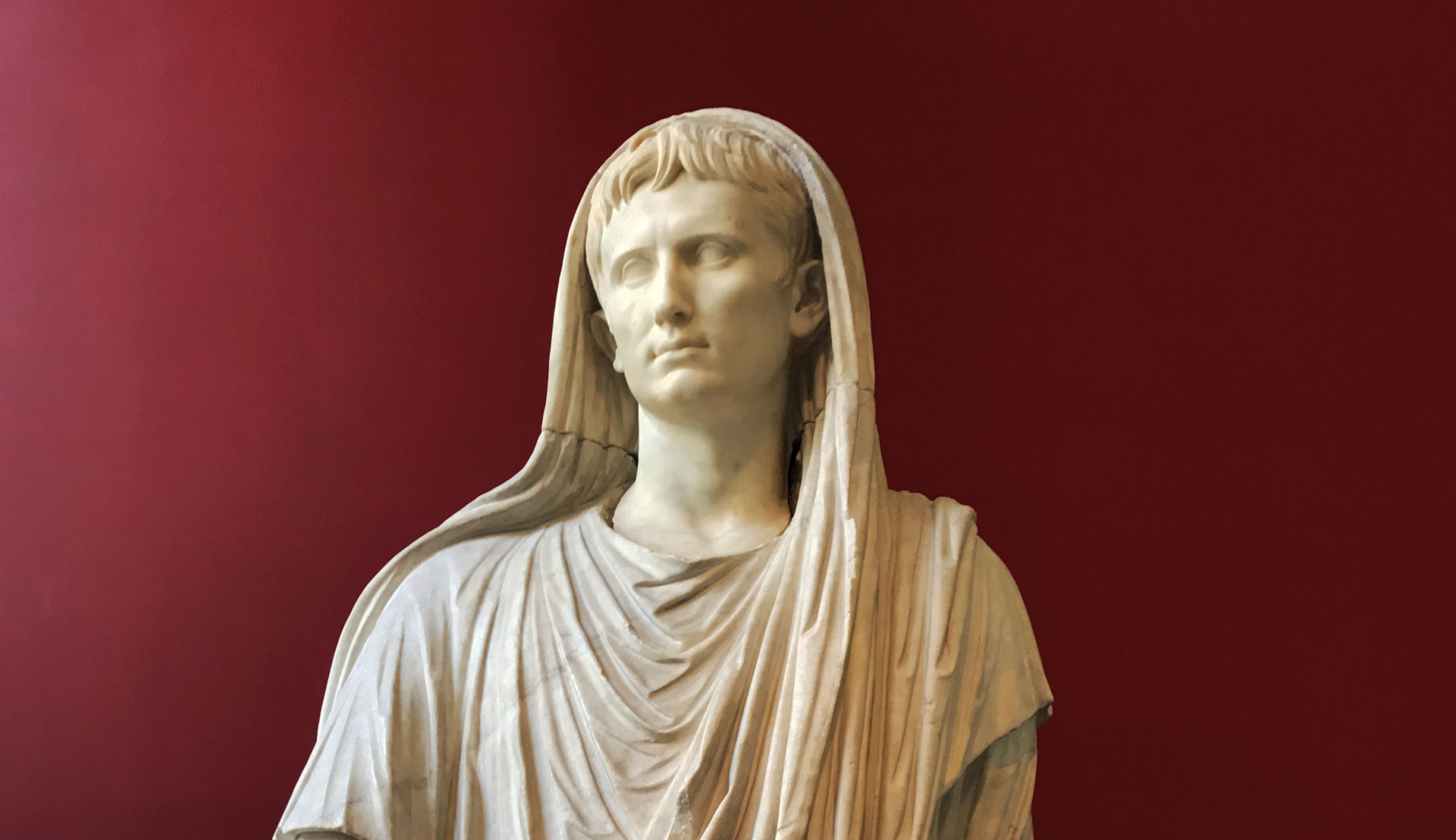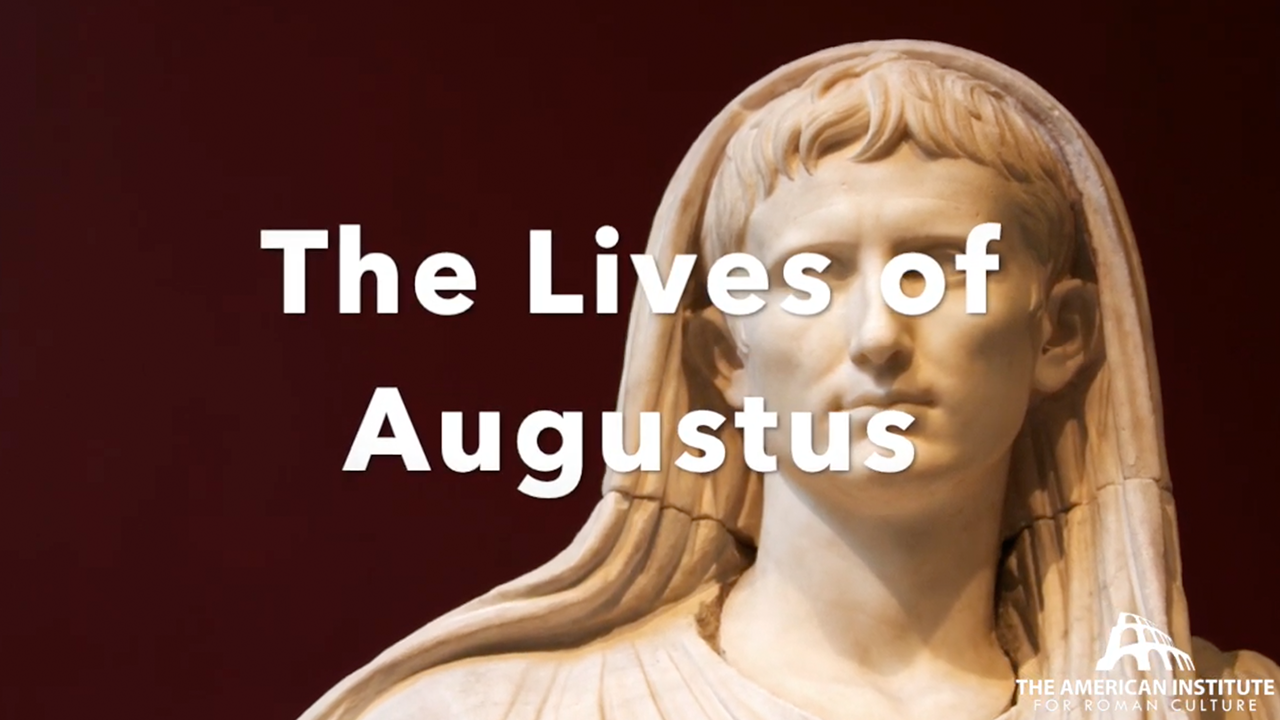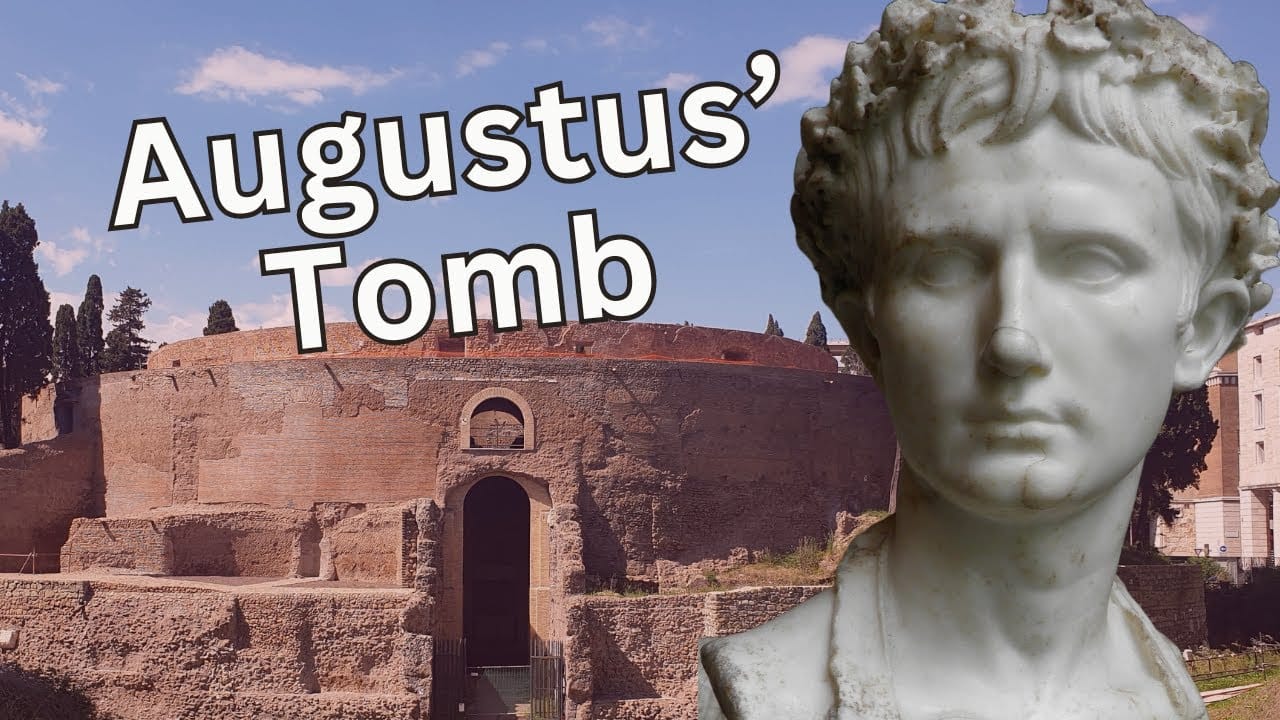Gaius Octavius, later known as Augustus, was born on September 23, 63 BCE. He rose to prominence after the assassination of Julius Caesar (44 BCE), when he was named Caesar’s adopted son and heir. From that moment, he took the name Gaius Julius Caesar Octavianus, though historians usually call him Octavian during this period to distinguish him from his adoptive father.
At just nineteen, Octavian moved quickly to establish himself in Roman politics. He held games in honor of Caesar (the Ludi Caesari), gained a seat in the Senate, and became consul in 43 BCE. He appealed to veterans, gained military support, and initiated the construction of the Temple of Caesar in the Roman Forum. His power grew after the Battle of Philippi in 42 BCE, where he and Mark Antony defeated Brutus and Cassius, the assassins of Julius Caesar.
To secure his position, Octavian formed the Second Triumvirate with Mark Antony and Lepidus. This was a power sharing agreement in which Octavian ruled the western provinces, Antony ruled the east, and Lepidus governed Africa. Octavian also used political marriages to strengthen his alliances, most notably giving his sister Octavia in marriage to Mark Antony. However, this partnership collapsed when Antony allied himself with Cleopatra. Their rivalry ended at the Battle of Actium in 31 BCE, where Octavian’s forces achieved a decisive victory.
With Antony and Cleopatra defeated, Octavian became sole master of Rome. In 27 BCE, the Senate gave him the honorific title Augustus, meaning “the revered one.” He was also recognized as princeps, or first citizen, marking his transformation from a rising politician to Rome’s first emperor.
Augustus’ reign ushered in the Pax Romana, a long period of peace and stability that transformed the Roman world. During this time, literature and the arts thrived, with writers like Virgil, Horace, and Ovid giving voice to the ideals of the age. At the same time, Augustus launched an ambitious building program that reshaped the city of Rome with monumental architecture.
Among Augustus’s greatest architectural achievements was the Forum of Augustus, completed in 2 BCE. At its center stood the Temple of Mars Ultor, dedicated to avenging Caesar’s assassination. The temple was flanked by long porticos with apses that served as tribunals, each decorated with niches holding statues of Rome’s greatest men, the Summi Viri. Colossal statues of Aeneas and Romulus connected Augustus to the mythical and historical founders of Rome. The Forum was paved with colorful marble imported from across the empire, signaling a new era of Roman construction. Nearby, the Hall of the Colossus housed an 11-meter statue of Augustus himself, shielded by a massive wall to protect it from fires in the nearby Suburra district.
In the northern Campus Martius, Augustus built his vast mausoleum, which served as the burial place for members of the Julio-Claudian dynasty. His close ally Agrippa contributed the Pantheon and other major projects, including the Aqua Virgo. Augustus also rebuilt or enhanced many of the city’s most important public spaces, including the Basilica Aemilia, the Basilica Julia, and the Temple of Divus Julius. His residence on the Palatine Hill was connected to the Temple of Apollo, and the Ara Pacis, or Altar of Peace, became one of the most enduring monuments of his reign.
Through these achievements, Augustus transformed Rome both politically and physically. He ended decades of civil strife, established lasting institutions, and reshaped the city into a monumental showcase of imperial power. His reign marked the beginning of an empire that would endure for centuries.
Bibliography:
- Grout, James. “Forum of Augustus.” University of Chicago. https://penelope.uchicago.edu/encyclopaedia_romana/imperialfora/augustus/forumaugustum.html
- Grout, James. “Temple of Mars Ultor.” University of Chicago. https://penelope.uchicago.edu/encyclopaedia_romana/imperialfora/augustus/mars.html
- Klein, Christopher. (2021). “How Ancient Rome Thrived During Pax Romana.” History.com. https://www.history.com/articles/pax-romana-roman-empire-peace-augustus
- Rattini, Kristin. (2019) “Who was Augustus Caesar?” National Geographic. https://www.nationalgeographic.com/culture/article/augustus-caesar
- Strauss, Barry. (2023). “The Roman Road: Lessons in Governance from Caesar Augustus.” Governance Matters Magazine. https://www.chandlerinstitute.org/governancematters/the-roman-road-lessons-in-governance-from-caesar-augustus
This content is brought to you by The American Institute for Roman Culture, a 501(C)3 US Non-Profit Organization.
Please support our mission to aid learning and understanding of ancient Rome through free-to-access content by donating today.
Cite This Page
Cite this page as: Darius Arya, The American Institute for Roman Culture, “Seminar – The Lives of Augustus,” Ancient Rome Live. Last modified 10/16/2025. https://ancientromelive.org/seminar-the-lives-of-augustus/
License
Created by The American Institute of Roman Culture, published on 10/16/2025 under the following license: Creative Commons: Attribution-NonCommercial-ShareAlike. This license lets others remix, tweak, and build upon this content non-commercially, as long as they credit the author and license their new creations under the identical terms. Please note that content linked from this page may have different licensing terms.





